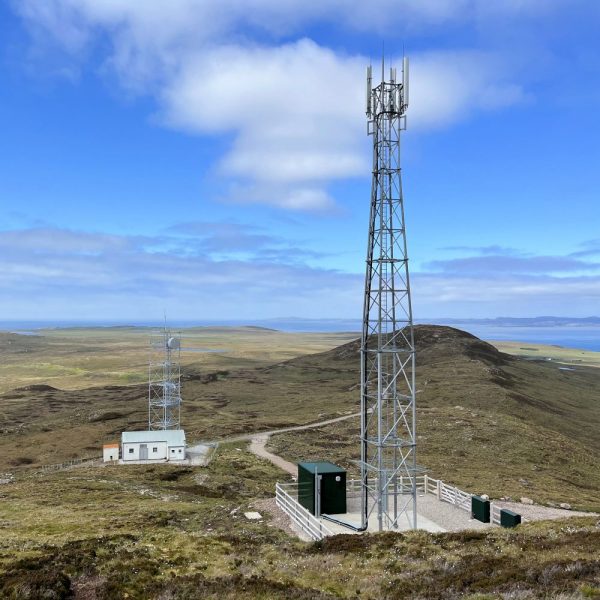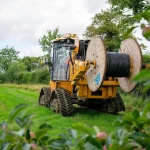Farrpoint Finds Investing in UK Rural 4G Mobile Brings Big Benefits

A new report from technical UK consultancy firm FarrPoint, which examined the impact of a single network deployment, claims to have proven that investing in better rural mobile connectivity will bring “significant economic, social and environmental benefits” for those it covers.
Excluding commercial deployments of 5G and 4G based mobile broadband infrastructure, there are currently two key state-aid supported mobile roll-out programmes. On the one hand, we have the Scottish Government’s nearly completed £28.75m 4G Infill Programme (S4GI), which is delivering 4G infrastructure and services for up to 55 mobile “notspots” across rural and remote parts of Scotland.
On top of that, the industry-led £1bn Shared Rural Network (SRN) project – supported by a public investment of £500m and private funding of £530m from operators – aims to help extend geographic 4G coverage to 95% of the UK by the end of 2025 (5G will also benefit). The scheme involves both the reciprocal sharing of existing masts in certain areas, and the demand-led building and sharing of new masts in others between the operators.
Advertisement
FarrPoint’s new report, which involved a survey of local residents, was produced to look at the impact that the S4GI had on the community of Coigach in Scotland, which has benefitted from a new mobile mast. The new mast was positioned in Polbain on the Coigach peninsula and provides 4G coverage to the neighbouring communities around Polbain and Achiltibuie, as well as coverage improvements on the primary single-track road into the area.
Overall, the firm found a number of reasons to be hopeful that such projects will ultimately help to pay for themselves, at least in terms of the wider benefits.
Key Findings
➤ Prior to the new mast going live, some 77% of respondents classified their mobile connectivity as poor or very poor, while only 8% said it was good or very good and 15% were broadly satisfied with the service, albeit while noting its limitations and the need to be adaptable (moving to spaces in the garden with a better signal etc.).
After the mast went live, only 35% of respondents classified their mobile connectivity as poor or very poor, while 35% said it was good or very good and 30% were broadly satisfied with the service. The proportion who are dissatisfied with mobile services decreased by over a half – from 77% to only 35%.
➤ Post-build, some 22% changed mobile operator, although not all went to EE (the only current provider on the Polbain mast). Elsewhere, 33% said the local mobile service had improved, 45% said it was broadly similar and, interestingly, 22% actually felt the service had got worse (the latter change in service quality is also aligned to a change in mobile provider).
➤ The year one benefit of the Polbain mast is modelled to be £86,000 (based on the number of premises benefiting from the mast – 43% of total – multiplied by the benefit value per premise) against a cost of £522,727 (average cost per site). This suggests that the break-even point for the mast is likely to be in 15 years time, which is consistent with predictions for other rural focused mobile and gigabit broadband builds.
➤ On a per premises basis, the value of good quality digital communication infrastructure can be assumed to be £804 per premises per annum, of which over £422 per premises could be attributed to wellbeing impacts.
➤ The Greenhouse gas emissions (GHGE) cost of the Polbain mast was modelled to be 9 tCO2e. Analysis from FarrPoint has determined that the annual GHGe benefit derived from access to the 4G service delivered by the mast has the potential to save up to 1.8 tCO2e per annum, ensuring that a GHGe benefit will be accrued from the end of year 6. The study concluded that such investments in digital infrastructure can thus lead to a 15% decrease in emissions.
Ultimately Farrpoint concludes that better connectivity, and connectivity at a level that should at least match the national average, should not be determined by economic and other benefits alike, but rather as it is simply the right thing to do. That the mast in Polbain has also made “sound economic and ecological sense too” is said to be simply a bonus.
Julia Campbell, Development Officer with the local Community Development Company, said:
“For many years, a lack of signal and difficulties with connectivity has not only been inconvenient but also created safety issues. Between us and Ullapool is 15 miles of single-track road through remote and mountainous terrain which, until recently, was a mobile black spot. If you had an accident or problem there, you couldn’t call for help.
I have rescued several tourists over the years, marooned by a puncture and faced with the prospect of walking miles to find a signal. Even at home, the phone signal was poor. I have missed various important calls from the GP and the bank, only to receive voice messages 24 hours after they originally called.”
Admittedly we always advise taking studies like this with a pinch of salt, not least since they tend to make a lot of assumptions about service coverage, performance and economic benefits (both before and after the new build), which may or may not accurately reflect reality. The lack of data from other communities also makes this report a little anecdotal.
Advertisement
On the other hand, there are clearly positives to be had and few people will complain about the arrival of service improvements, regardless of whether they can be directly proven to result in significant economic, social or environmental benefits.
Mark is a professional technology writer, IT consultant and computer engineer from Dorset (England), he also founded ISPreview in 1999 and enjoys analysing the latest telecoms and broadband developments. Find me on X (Twitter), Mastodon, Facebook, BlueSky, Threads.net and Linkedin.
« Broadband ISP Plusnet Launch New 300Mbps UK Full Fibre Plan UPDATE






















































‘On a per premises basis, the value of good quality digital communication infrastructure can be assumed to be £804 per premises per annum, of which over £422 per premises could be attributed to wellbeing impacts.’
Really? Totally pointless survey.
Oh yes. Back when I occasionally had to write a cost benefit analysis I had to learn to write b&&&&&&s because that is what was required. There would be some genuine benefit but a lot of padding.
On a different note if EE is the only provider why would you go with anyone else?
The only provider from the new mast, but not the only provider able to get ‘some’ signal into the area (O2 and Vodafone).
The average person sees a telecoms mast and assumes it gives a signal no matter which operator you choose.
I would suggest is that spending public money on a 4G mast in a remote area may not be great value if the most of the locals are signed up with a network that does not use the new mask.